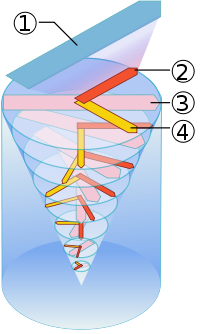orangehero
Well-Known Member
Howdy,
I came across this post by MoreBeer on the ProBrewer forums:
It's an interesting conclusion. Don't know if it really matters for homebrewers, but I'm still curious about what they did and how they measured. I've tried to find this paper but I am not having any luck. Does anyone happen to have a copy?
I came across this post by MoreBeer on the ProBrewer forums:
Yes, Experiments with a Whirlpool Tank. By G. Van Gheluwe and M. Dadic Molson Breweries published in The Brewers Digest, September 1972
In the study, many factors were studied. Their research showed an increase in sedimentation of 6.2 % by running counter clockwise vs. clockwise.
MoreBeer
It's an interesting conclusion. Don't know if it really matters for homebrewers, but I'm still curious about what they did and how they measured. I've tried to find this paper but I am not having any luck. Does anyone happen to have a copy?




